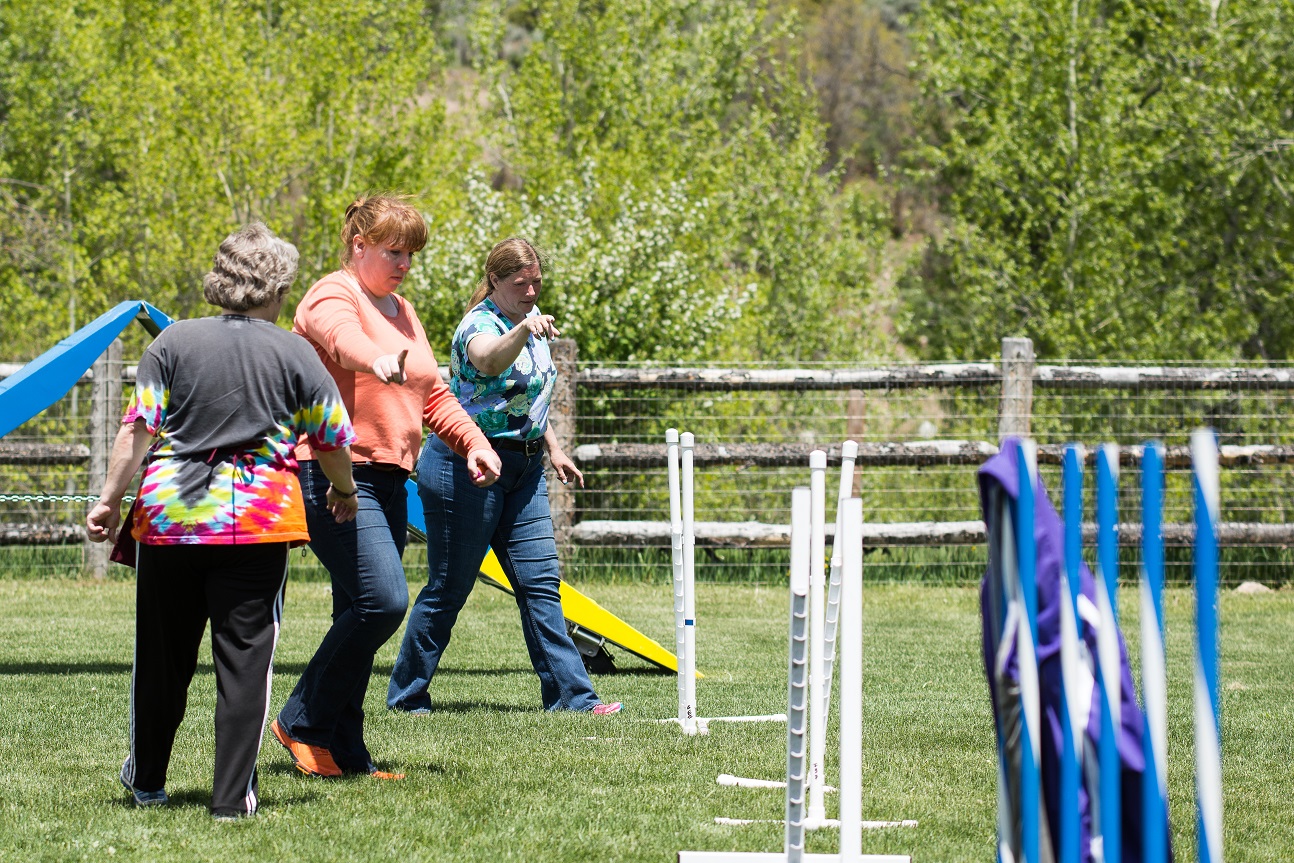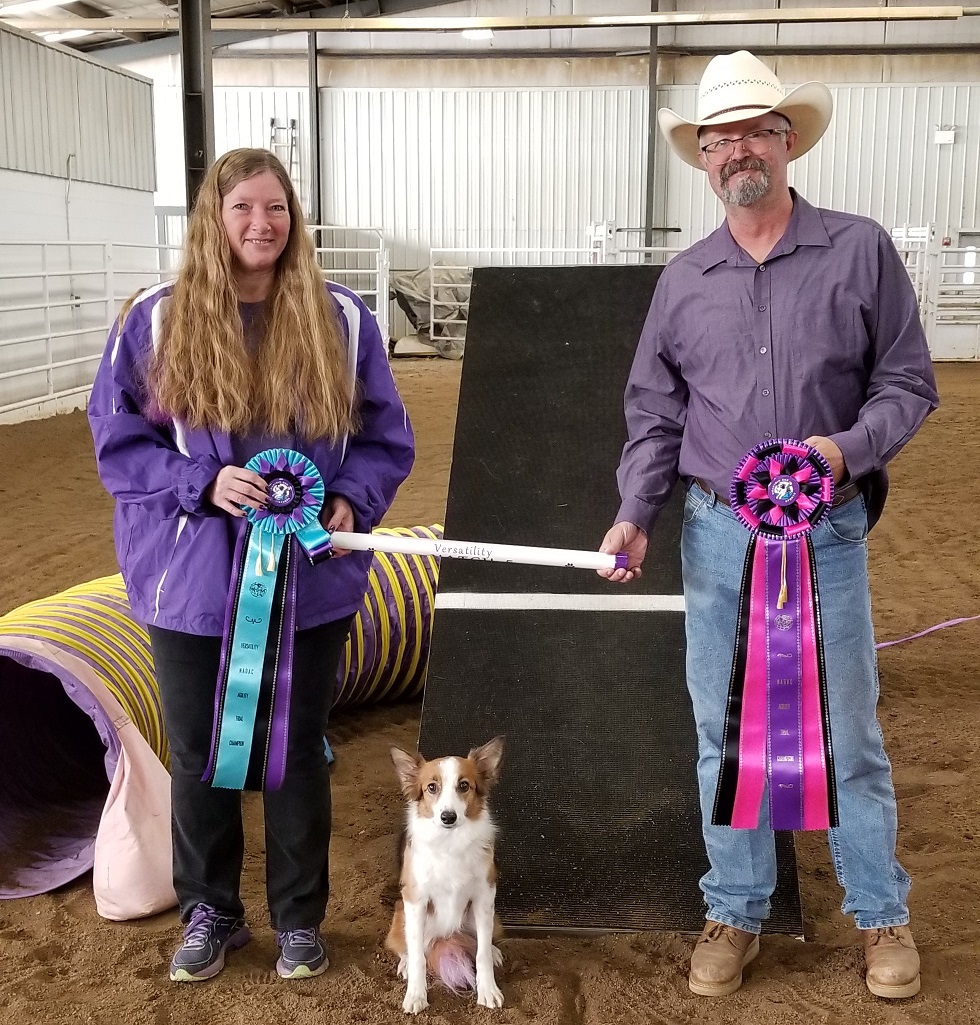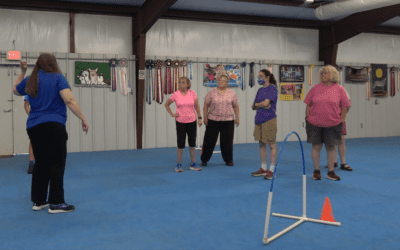Written by Lorrie Reynolds
Categories
I got a message from someone who needed help with their agility training the other day. It’s not the first time I’ve heard the story, and I’m sure it won’t be the last.
She went to a “top” instructor for help with her fast Border Collie. She has a health issue that doesn’t allow her to run. After spending a couple of months and a ton of money focusing on a start line the instructor insisted would help, the instructor had only one solution for the handler. She told her to “just run faster”. Ouch.
Who is the Typical Dog Agility Competitor?
It’s time for instructors to face reality. The vast majority of agility participants are not 25 – 30 year old track stars. Take a look around at your next local agility trial. If the fit and under-40 group makes up more than 20% of the people there, I’ll be shocked.
Did you know that about 50% of the adults in the US have a chronic health condition? That doesn’t include obesity. While it’s true that people with serious illnesses or physical limitations are less likely to be drawn to sports, many competitors started agility earlier in life and are too in love with the sport to give it up after they are diagnosed.
Instructors need to stop taking money from students if they can’t help them.
There is an art to matching students with the right instructors. It’s our responsibility to know when a student is a good fit for what we teach, and when they aren’t.

The Limitations of a Single Agility Handling System
The handling systems that emphasize lots of running, “complex” handling moves, and constant movement are challenging and fun. When they first became popular, and I was more able to move, I learned those methods and (mostly) enjoyed them. My “Multi-Dimensional Dog” seminars blend that type of handling with distance to make the systems more accessible to the average competitor.
I love teaching those methods to the students who are able to excel with them.
BUT, those systems aren’t the only answer.
They aren’t even an option for many of the typical agility competitors.

An Agility Instructor’s Responsibility
Instructors need to be honest with students. I can, and have coached students to the national level, where they’ve done very well. It’s fantastic to see people earn Championship titles and place at Nationals. Coaching people to that level is fun, whether they are able to run or need a different solution.
When I get a student who truly has world team aspirations, I am very up-front about how far I am willing to coach them. We can crush things like foundations, masters-level handling, distance (my favorite), and course analysis together, but I honestly don’t enjoy the pressure-cooker atmosphere of world team-level coaching. I want to love what I’m doing, not be stressed by it.
I’d rather refer them out and lose a student than hold someone back from their dreams.
What’s the Solution?
If an instructor has only one teaching method based on a system that requires people to run, they should only be taking on clients who are physically capable of thriving in that system. Telling a student that you can help them, charging them for training that may or may not be related to their issues, and then trying to fit them into a system that doesn’t work for them is both unethical and unkind.
Round pegs don’t fit into square holes. It makes both parties miserable and can turn students off of agility for good.
If a student is beyond what an instructor can or wants to teach, the instructor needs to find someone who is a better fit and refer them out. There are instructors who enjoy teaching alternate methods that the student can actually thrive with.
It’s not about ego or money. It’s about not making a student feel like they are “less than” or incapable. It’s about letting everyone feel the joy of succeeding with their teammate while they are having fun. It’s about kindness and decency, and as professionals, we owe that to whoever we are coaching.
You Might Also Like…
Five Ways to Crush It at Your Next Dog Agility Seminar
Going to a dog agility training seminar? Check out these five tips to maximize your return on investment!
Read This Before Deciding on Your Agility Dog’s Contact Performance
Which contact performance, running or stopped, is right for your team? The answer might surprise you.
Is Your Agility Dog a Pinto or a Ferrari?
If you’ve moved up from a slow or moderately-fast agility dog to a speed racer, here’s some advice to make your life easier.
Get tips, stories, discounts, and early notification of events and new courses delivered straight to your inbox! Join the community!




0 Comments